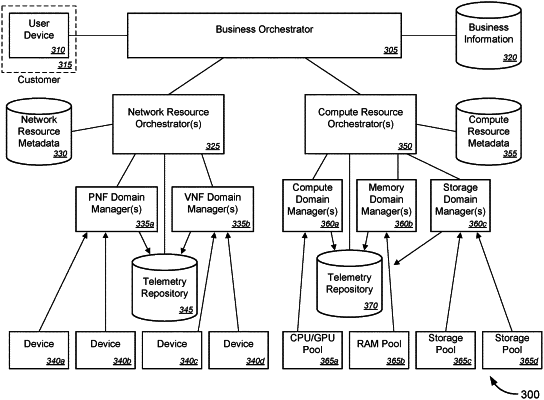| CPC H04L 47/82 (2013.01) [G06F 16/2246 (2019.01); G06F 16/51 (2019.01); G06N 3/04 (2013.01); G06T 11/001 (2013.01); G06T 11/206 (2013.01); H04L 41/0816 (2013.01); H04L 41/14 (2013.01); H04L 41/5009 (2013.01); H04L 41/5019 (2013.01); H04L 41/5054 (2013.01); H04L 43/045 (2013.01); H04L 47/762 (2013.01); H04L 67/51 (2022.05)] | 19 Claims |

|
1. A method, comprising:
receiving, with a computing system, a request for network services from a user device associated with a customer, the request for network services comprising one of: desired characteristics and performance parameters for the requested network services;
in response to receiving the request for network services, generating, with the computing system, a first request-based parsimony tree based at least in part on the desired characteristics or performance parameters contained in the request for network services;
accessing, with the computing system and from a datastore, a plurality of first network-based parsimony trees, each of the plurality of first network-based parsimony trees being generated based on measured network metrics;
comparing, with the computing system, the first request-based parsimony tree with one or more first network-based parsimony trees among the plurality of first network-based parsimony trees to determine a fitness score for each first network-based parsimony tree, each fitness score being a value indicative of a level of heuristic matching between the first request-based parsimony tree with one of the one or more first network-based parsimony trees;
identifying, with the computing system, a best-fit network-based parsimony tree among the one or more first network-based parsimony trees based on the fitness scores of the one or more first network-based parsimony trees;
identifying, with the computing system, one or more first network resources among a first plurality of network resources for providing the requested network services, based at least in part on network resources represented within the identified best-fit network-based parsimony tree; and
allocating, with the computing system, at least one first network resource among the identified one or more first network resources for providing the requested network services.
|